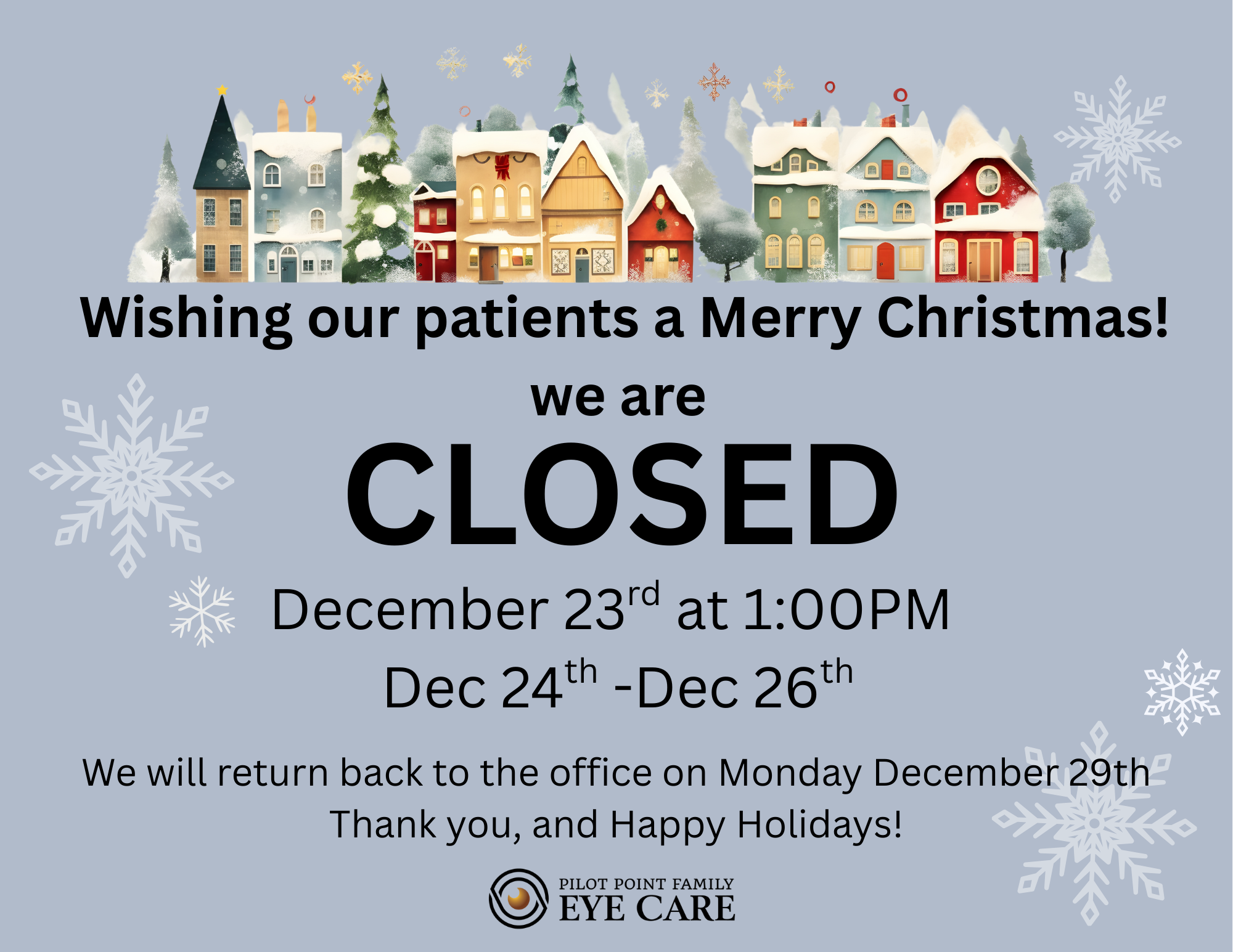Eye Care Services in Pilot Point, TX
We are committed to providing quality eye care to you and your family.

Comprehensive Eye Exams
Comprehensive eye exams evaluate all aspects of your vision and eye health. The comprehensive eye exam looks at your eye externally and internally for any signs of eye disease, then tests your vision in a variety of ways.

Emergency & Medical Eye Care
Eye emergencies cover a range of incidents and conditions such as; trauma, cuts, scratches, foreign objects in the eye, burns, chemical exposure, photic retinopathy, and blunt injuries to the eye or eyelid.

Diabetic Retinopathy
Technically, anyone who suffers from diabetes, whether it be Type 1 or Type 2, could be at risk of developing diabetic retinopathy. However, the condition is more likely in certain situations.

Dry Eye Management
While dry eye isn’t a serious condition, it can have a major impact on your quality of life. You may find your eyes get tired faster or you have difficulty reading

Macular Degeneration
Macular degeneration, commonly referred to as age-related macular degeneration (AMD), is the single largest cause of sight loss in the developed world and affects more than 10 million Americans.

Myopia Control
Myopia, more commonly known as nearsightedness, is a condition where individuals are able to see objects that are close to them but may have difficulty distinguishing things at a distance, such as road signs or leaves on a tree.

Contact Lens & Exams
This post will walk you through what’s involved in a contact lens exam and what you can expect every step of the way.

Specialty Contact Lens
Every patient is different and so are their eyes. This means that there need to be different types of contact lenses to suit each individual.












